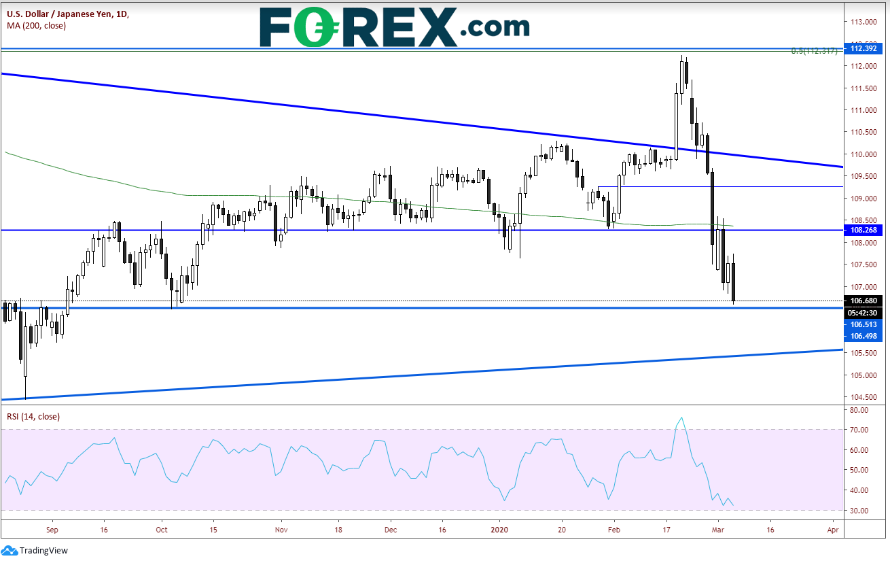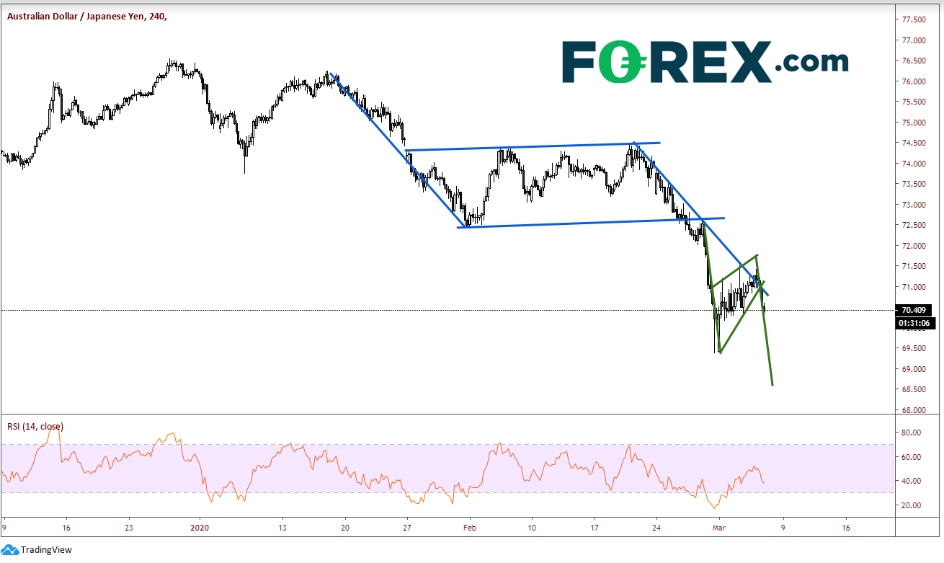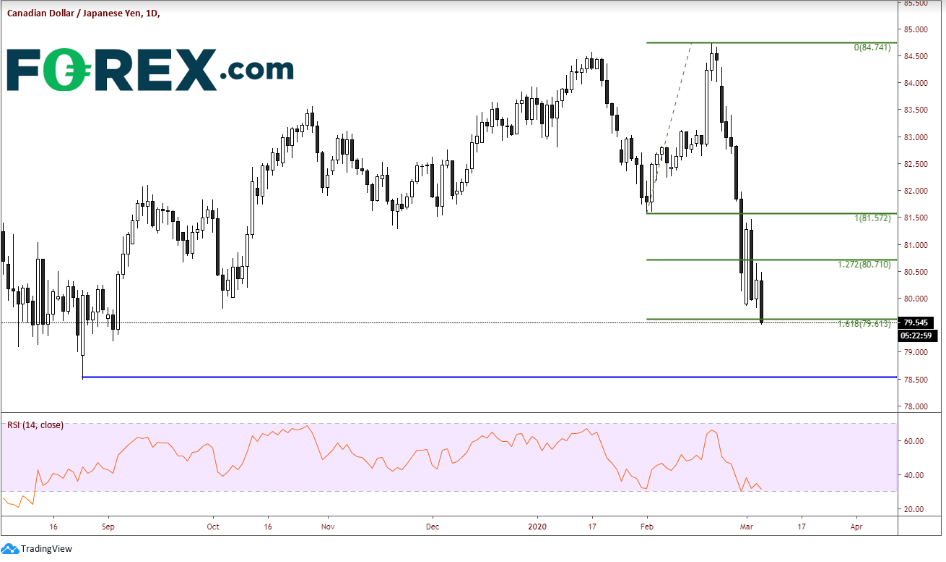An interesting weekly report came out of Japan early in Asia today, which said that stock investments by foreigners fell by JPY -755B during the week of February 29 vs. JPY -68.1B in the prior week. This is the largest withdrawal of funds from Japanese stocks since September 22, 2019. In addition, foreign bond investment fell by JPY -489.7B during the week of February 29 vs. JPY +656.3B a week earlier. However, the yen is still maintaining its “flight-to-safety” quality, at least until the Bank of Japan decides to provide further stimulus. Market News International reported that officials signaled Japan doesn’t need additional stimulus until USD/JPY falls sharply through 105.00. The BoJ doesn’t meet again until March 18/19.
The U.S. Federal Reserve cut rates on Tuesday by 50bps to 1.25%. After the GPIF was in the market during mid-February selling yen and buying counter currencies, USD/JPY began to tank, and fear of the coronavirus began spreading around the globe. USD/JPY came off from above 112.00 to today's levels are near 106.50. There is horizontal support near today's lows, but the bearish outside engulfing candle on the day (so far) isn’t showing much promise for the pair to bounce significantly. Next support is a rising weekly trendline near 105.50 dating back to mid-2016.

Source: Tradingview, FOREX.com
The Reserve Bank of Australia (RBA) also cut rates this week by 25bps, to an a new all-time low of 0.50%. On a 240-minute timeframe, AUD/JPY broke lower out of the flag pattern dating back to mid-January and halted near the target of 70.00. Price bounced to near 71.50, turned lower and formed a new pennant-like formation. Today, the pair broke lower again, moving toward target near 68.60. AUD/JPY must first break the previous lows of 69.40 on its way to target.

Source: Tradingview, FOREX.com
Finally, the Bank of Canada cut rates yesterday by 50bps from 1.75% to 1.25% and they still have additional room to move if needed. CAD/JPY as been moving lower from its highs of 84.75 in mid-February (the same time USD/JPY began moving lower). The pair has stalled at the 161.8% Fibonacci extension level from the lows on February 3 to the highs on February 20, near 79.50. If price breaks through here, it could move quickly to the lows of August 26, 2019 near 78.50. First resistance is the lows from earlier this week near 80.00.

Source: Tradingview, FOREX.com
Although the Bank of Japan hasn’t showed signs it would provide more stimulus until its meeting in mid-March, there is always the chance it could convene a inter-meeting and provide support (as the Fed did). However, one must wonder how much more it can do, as it has been supporting the economy for over 20 years. But, if the BoJ wants the yen to weaken, it’ll need to do something soon!
